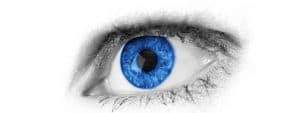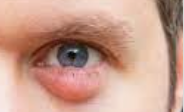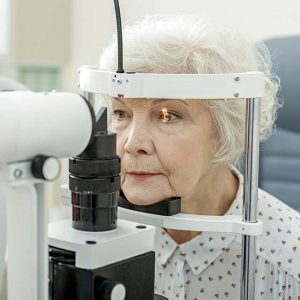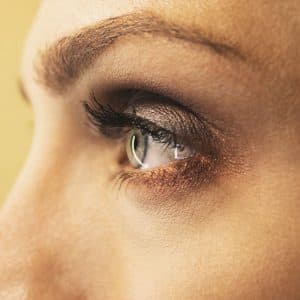Over 5 percent of all contact lens wearers will develop GPC at some stage.
What is GPC?
Giant papillary conjunctivitis (GPC) occurs when the inside of your eyelid appears red, swollen, and irritated. Without GPC, the inside of your eyelid is very smooth.
People who wear contact lenses (especially soft lenses) have the greatest chance of getting GPC, which can happen even after wearing contacts for many years.
People who do not wear contact lenses can also get GPC. But this is rare, mostly affecting those who have an artificial eye or stitches.
GPC is a form of allergic conjunctivitis, an inflammation of the under-side of the eyelid, when one or more little round bumps (papillae) appear.
The term “giant” refers to bumps that are greater than 1 millimeter (mm) in diameter.
Types of GPC
There are two types of GPC, primary and secondary. Both are allergic reactions, but the causes are different.
There are two types of primary GPC:
1. Vernal keratoconjunctivitis (VKC)
VKC is a chronic condition that affects children and adolescents aged 6 to 18. Seasonal allergies will usually cause symptoms to come and go.
2. Atopic keratoconjunctivitis (AKC)
AKC affects people who have atopic eczema that begins in childhood. The symptoms in their eyes, on the other hand, frequently do not appear until later in life.
Secondary GPC occurs when an object in the eye, such as contact lenses or a suture, irritates the inside of the eyelid.
SEE RELATED: Myokymia (Eye Twitch)
If you suspect you have GPC, contact an eye doctor near you.
GPC symptoms
The symptoms are the same regardless of which type of GPC you have. They may include the following:
- Bumps on the underside of your upper eyelid
- Itching
- Swelling
- Eye redness
- Blurry vision
- Excess mucus
- The feeling of a foreign object in your eye
In the final stages of GPC, the symptoms become more severe.
Stages of GPC
The symptoms of GPC may not affect you too much in the early stages.
Symptoms in the early stages include:
- Mild itching or redness of the eye
- Small amounts of excess mucus
- Small bumps on the underside of your upper eyelid
The symptoms of GPC grow more uncomfortable as the disease progresses. These signs and symptoms could include:
- Blurred vision
- Intense itching
- Movement of your contact lens when blinking
- Increase in the size or number of the bumps
- Larger amounts of excess mucus
The symptoms of GPC frequently grow intolerable as the disease progresses. These signs and symptoms include:
- Pain when wearing your contact lenses
- Excess deposits on your contact lenses
- Excess mucus becoming strings or sheets
- Intolerable feeling of something foreign in your eye
- Increased movement of a contact lens when blinking
- Additional bumps on the underside of the eyelid bumps
- Eyes stuck closed from excess mucus when waking up in the morning
Causes of GPC
Primary GPC
Allergens are the cause of primary GPC. Most people experience seasonal allergies, eczema, asthma or another allergy-related condition if you have primary GPC.
Secondary GPC
Contact lenses are the most common cause of secondary large papillary conjunctivitis, specifically the use of soft contact lenses.
Those who wear soft contacts are 10 times more likely to develop GPC than hard lens wearers.
This increase could be due to the fact that allergens are more prone to attach to soft lenses than hard lenses.
Contact lenses are regarded as prosthetics. Other ocular or eye prosthesis, as well as any exposed stitches from an eye operation or injury, can cause GPC.
How to treat GPC?
Treating secondary GPC
If GPC is caused by wearing soft contact lenses, switching to eyeglasses or hard contact lenses instead of soft contacts is the quickest way to treat the disease. However, many people do not choose these alternatives.
By rotating between contacts and eyeglasses, many people may be able to manage or prevent GPC. Alternating contacts allows the eye to rest and reduces discomfort from soft contacts. There are, however, other treatment options for GPC.
Try the following to prevent secondary GPC from recurring:
- Practice proper lens care
- Change the type or design of your lenses
- Stop wearing contacts temporarily
- Use prescribed eye drops
Treating Primary GPC
Cromolyn sodium and lodoxamide are the main treatments for primary GPC.
Other possibilities for both forms of primary GPC treatment include:
- Topical cyclosporine
- Topical steroids – Despite the fact that they are prescribed, they cannot be taken for an extended period of time due to the negative side effects associated with long-term use.
- Antihistamines – While antihistamines may work for some, they may not be strong enough in the long term.
LEARN MORE: Eyelid Conditions
If your contact lenses are uncomfortable contact an eye doctor near you to get the best treatment.
GPC is treatable, manageable, and, in most cases, reversible.
Seeing your eye doctor as soon as you notice symptoms will allow you to continue to enjoy the many benefits of wearing contact lenses.









